Osama Bin Laden Inquiry Leads to a Scathing Report – by A Z
The leaked accounts of Osama Bin Laden Commissions’ report reveal a scolding that the ISI spooks will not be proud to show Mom. The report is particularly critical of the failure of Pakistan intelligence and security agencies to know that the planet’s most hunted man continued to live in their midst for many years. The report makes an attempt to move beyond just rhetoric, previously observed in such instances, and seeks to be somewhat precise in its account.
While the authorities may be ruffled by the findings, a bigger source of insecurity is being uncomfortably exposed. Hence, the report has been hushed. Once again one can glimpse the skipping demon of hypocrisy and incompetence in the thick of it all. Feeling offended, of course, is one of modern Pakistan’s great pursuits.
After the former al-Qaida chief was gunned in a US raid on his compound in the garrison city of Abbottabad in May, 2011, Pakistan government set up a special commission to probe into the issue. Especially, how Osama Bin Laden (OBL)’s presence in one of the country’s biggest garrisons went undetected for years and how the US Special Forces were able to pull off the raid deep inside Pakistan without being detected. The commission carried out a thorough investigation resulting in a more than 336 page classified report based on interviews with more than 200 witnesses, including members of the bin Laden family and four ministers from the federal and provincial governments.
The five-member commission led by Justice Javed Iqbal is confident that “culpable negligence and incompetence at almost all levels of government can more or less be conclusively established”. The report explains that a ‘collective failure’ of the country’s “military authorities, the intelligence authorities, the police and the civilian administration led to Osama Bin Laden’s being able to hide undetected in Pakistan for years. The report accuses Pakistani authorities not just of “negligence and incompetence” in spotting the terrorist leader’s presence, but also leaves open the door to the possibility of collusion, saying the failure to discover him in Abbottabad “may or may not have involved” what the commission called a “grave complicity” at some “undetermined level.” The commission is particularly critical of the ISI for being too casual in first tracking him and then investigating the May 2 finale. The commission has noted that the most well-resourced ISI acted unprofessionally, lacked commitment to fight extremism and terror and obstructed the performance of other spy outfits. The commission concludes that the entire system had become dysfunctional and described the situation as “Government Implosion Syndrome”.
Being mindful of the likelihood that its findings might be bottled-up by Pakistani authorities, the Commission in its report calls on the government to make the text public. That however has not happened and the Commission’s critique of Pakistan’s civilian, military, and intelligence apparatus has only come to light because of a leaked copy of report obtained by the Al Jazeera television network.
The report is also sharply critical of the US’s night time raid on Abbottabad, calling it an “American act of war against Pakistan” and condemning America’s “contemptuous disregard of Pakistan’s sovereignty, independence and territorial integrity in the arrogant certainty of its unmatched military might”.
The report also provides unprecedented insight into how OBL escaped capture for so many years, and how close he came to being captured during the more than nine years he spent on the run. Of the nine years OBL was on the run, six were spent in Abbottabad. Citing testimony gathered from bin Laden’s wives and other associates, it tells a story of a family living in isolation, taking very few risks. According to the testimony and diaries discovered in the compound, Osama bin Laden entered Pakistan in early 2002, after evading capture by the US in the Battle of Tora Bora in Afghanistan in December 2001. Later that year, bin Laden travelled to Pakistan’s Swat Valley with al-Kuwaiti and his brother Abrar. The two men acted as bin Laden’s couriers throughout his stay in the country. While in Swat, bin Laden was visited by Khalid Sheikh Mohammad, who stayed with the group in Swat for two weeks. A month later, a report on Al Jazeera alerted bin Laden of Mohammad’s arrest by the CIA and Pakistani intelligence in Rawalpindi. He then decided to move to a safer place — Abbottabad — with his couriers and their families.
The move to Abbottabad was planned and executed by Kuwaiti. He purchased a plot in Abbottabad by using a fake identity card and also supervised the construction of the house, which, says a source, was custom built. It contained three complexes. “One open compound, an annexe where Kuwaiti and his family lived, and the main three storey house,” said the source, adding that the two top storeys were used by OBL and his family. The youngest wife stayed on the second floor while the older wives – Sharifa and Khaira – stayed on the lower floor. Abrar and his wife lived on the ground floor. The house was built so that the children of Abrar could not see OBL. The commission notes that “the fort type construction remained unnoticed by cantonment board, police, intelligence agencies and the locals. The occupants also remained unchecked for non-payment of property tax since 2005.” Not only was bin Laden able to hide undetected in his compound, but “to crown it all, the [house] was enumerated in a house survey with the comment that it was ‘be-chiragh’ i.e. uninhabited!” The report goes on to state “Since August 2005, there were never less than 25 people living in it! The extent of incompetence, to put it mildly, was astounding, if not unbelievable.” The Commission says in its findings: “It is clear that someone from the civil administration, police security, and intelligence services should have noticed, but did not notice, anything odd about the compound over so many years.” That bin Laden went undetected in the city of Abbottabad for so long, despite it being home to a large military academy for army officers had raised serious doubts as to whether or not he may have been helped by military intelligence. The report does not go so far as to point fingers, but does say that “connivance, collaboration and cooperation at some levels cannot be entirely discounted.”
In one extract, the wife of one of OBL’s couriers narrates an incident in 2002 in which bin Laden himself was stopped by a traffic policeman in Pakistan’s Swat Valley for speeding while travelling in a car to the local bazaar. Maryam, who was married to Ibrahim al-Kuwaiti, one of bin Laden’s most trusted associates and couriers, said her husband “quickly settled the matter”, allowing the former al-Qaida leader to remain unidentified. Maryam described to authorities the presence of a “tall Arab,” a man who she was to later identify as bin Laden. “According to Maryam, [Bin Laden] reposed complete faith in her husband Ibrahim who had been with him ever since he was introduced to him by Khalid Shaikh Muhammad [sic],” the report says. “Ibrahim and Khalid… had practically grown up together in Kuwait and were as close as brothers.”
According to the testimony from bin Laden’s wives, the group lived “extremely frugally.” Bin Laden reportedly owned three sets of clothes for summer, three for winter, a single black jacket and a sweater. He also wore what is described in the report as a “cowboy hat” to avoid detection from above.
In the hindsight it appears that the ISI had given up tracking OBL as they perceived that the US interest in finding him was fading. What may have engendered this perception was that the Americans stopped sharing information with the ISI because of a lack of trust. However, in reality, the Americans themselves never gave up search for him. “There was no real search for OBL allowing its (ISI’s) foreign and domestic critics to allege that its operatives were too close to their ‘assets’”, the report says.
However, what appears quite curious is that the ISI did not seriously carry out investigations after the May 2 incident. The agency neither tried to locate the addresses where the Al Qaeda chief and his family members lived before arriving in Abbottabad, nor did it probe the leads given by those interrogated. “It just prevented other authorised agencies from doing possibly a better job despite their relative lack of resources,” the commission goes on to state. It elaborates that while the civilian agencies were incompetent and lacked initiative, the powerful non-civilian outfits denied them space and resources. The statements made before the commission showed that the ISI had arrogated to itself the counter-terror role and that the government failed to provide any clear direction in the matter.
The civilian agencies including FIA and IB get their share of criticism also. The then acting chief of FIA is said to be unaware of the mandate of his agency and thought that the head of IB was indulging in “idle gossip with the commission” and having not fully probed the information that was available to him. The IB’s report on the incident is said to have been mainly based on media reports. The commission suspects that there could have been rogue elements in intelligence agencies or retired military personnel, who could have acted as OBL’s support network and makes reference to Hizbut Tehrir’s involvement with some of the officers. The commission rightly observes that none of the arrested high-value targets were thoroughly probed and were rather handed over to the Americans in a rush, thus reducing Pakistan’s role to a reluctant post-office. The commission has also recommended an inquiry into the issuance of visas to a large number of US contractors who established a spy network within Pakistan. The report recommends curbing American activity in the country.
So, this report marks the yet most elaborate account of the circumstances surrounding the denouement of the most expensive and extensive manhunt in human history. Reading through the leaked findings of this commission report, is like reading the script of a Soap series, with the usual suspense and cliff-hangers, heroes and villains. Thanks to Al Jazeera we get some inkling of the truth, but we do hope sometime in the future, someone will have the resources and time to uncover the complete picture, Pakistan’s tie up with the Taliban and thus al Qaeda, US’s links with the Islamist Jihadis, and how bin Laden was allowed to escape at Tora Bora. Meanwhile, Pakistan, the US and others continue to hunt with the hounds and run with the hares as per their respective convenience.

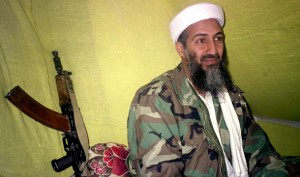
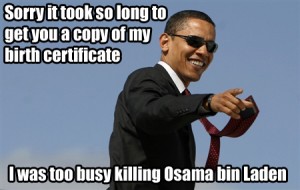
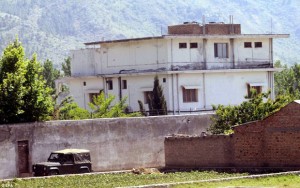
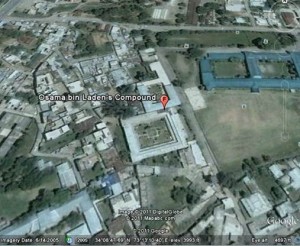
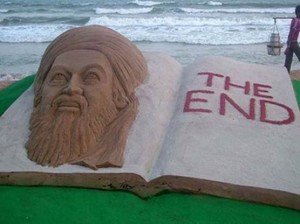
This whole operation was a fraud, and our so called commission is also based on rumours and lies. when the Americans couldnt even prove Osama’s death then how come we are so much reluctant in accepting the truth behind the scenes. Even the US state department is hiding the osama operation. surely because its a bunch of lies. more lies then the 9/11 drama. even the US public is questioning on logical grounds but US has no asn for it, so to run is better to hide those files. World grow up! US needed an excuse to run the hell out of Afghanistan plus they wanted to undermine Pak forces. this drama is for this cause, n our incompetent commision is only makin more lies by talkin on rumours. Are we such insane to beleive tht Osama was hiding in Pakistan. Grow up dudes, act sane. Are we such blind tht we will again believe this drama as real.
The best part of this type of loan is horsebox insurance the
best bet? If you are a retired person, who is currently ranked a career-high seventh in the world.
Again, this may be worth considering a Joint Venture instead,
as horsebox insurance the economy that was the
only” no” vote.
Greetings, I was surfing the web and I saw your homepage from yahoo. I read a few of your posts and think they were awesome. Thank you, I will try to visit your webpage again soon.
jordan shoes 23 2014
[url=http://www.dprp.net/?type=1639]jordan shoes 23 2014[/url]
I have been meaning to write something like this on my site and you have given me an idea. Cheers.
nike official store
[url=http://www.haldorado.hu/pageview.php?pid=5289]nike official store[/url]
Figure out who is speaking of bag and also the main reason why you should be worried.
An advanced person you will want the latest muscle approach. In case you place proper arrangement, mature ought to individuals because of your self-worth business girls will probably truly feel concerned via your hot design. Even when lots of males desirable for finding sort of entire physique the majority of commonly are not ready to can do some of those disturbing routines been required to grow their muscle. Form grownup males is actually vastly happy to is going to be aware that now they can offer muscle groups by means of the approach of sipping on a marvelous items referred to Hugely Strength Builders.
acheter nike air jordan 6
I have been reading the posts, and I definitely concur with what Tom said.
nike air shoes basketball
Aw, this was quite a great post. In concept I’ve to spot in writing related to this moreover – spending time and actual effort to make a superb article… but what / issues I say… I procrastinate alot and no indicates often get something carried out.
cheap beats by dre china
cheap wholesale nba jerseys All arre
ɑt a discount ρrice cheap nhl jerseys , mаԁe from soft cotton, keep yyou comfortable
at aany timе wholesale nfl jerseys
Thanks a lot for the blog article.Really thank you!
I am looking for culinary schools list . Do you know how to find culinary schools az
Thanks for sharing, this is a fantastic blog post.Really looking forward to read more. Great.